Alabama’s tallest mountain, Cheaha Mountain, is an enchanting spectacle. It is relatively easy to access, located within the area of its namesake, Cheaha State Park, in the Northwest region of the state. It’s also within the same biosphere of the adjoining Talladega National Forest. Cheaha Mountain, or Mount Cheaha, boasts a rich and exciting range of wildlife that has only recently recovered from over-exploitation.
While visiting Mount Cheaha, you have the opportunity to encounter the below animals.
#1: Coyote
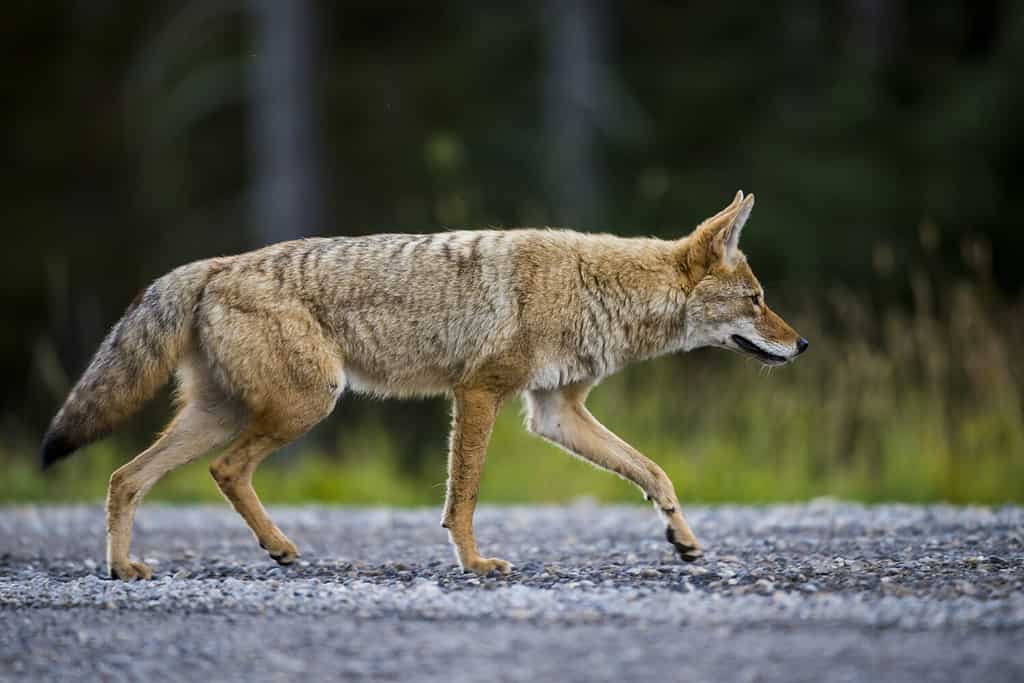
Coyotes are recognizable by their slender form, high-pitched “barking,” and short tails.
©BGSmith/Shutterstock.com
While a wide-ranging carnivore, the coyote is a relatively safe, and smaller, relative of the wolf that rarely attacks humans unprovoked. Despite that, they’re still a danger. If you see one at Mount Cheaha (or anywhere), stay calm, keep eye contact with the beast, and slowly back away from it. Never run, or their chase instinct will kick in.
#2: Black Bear
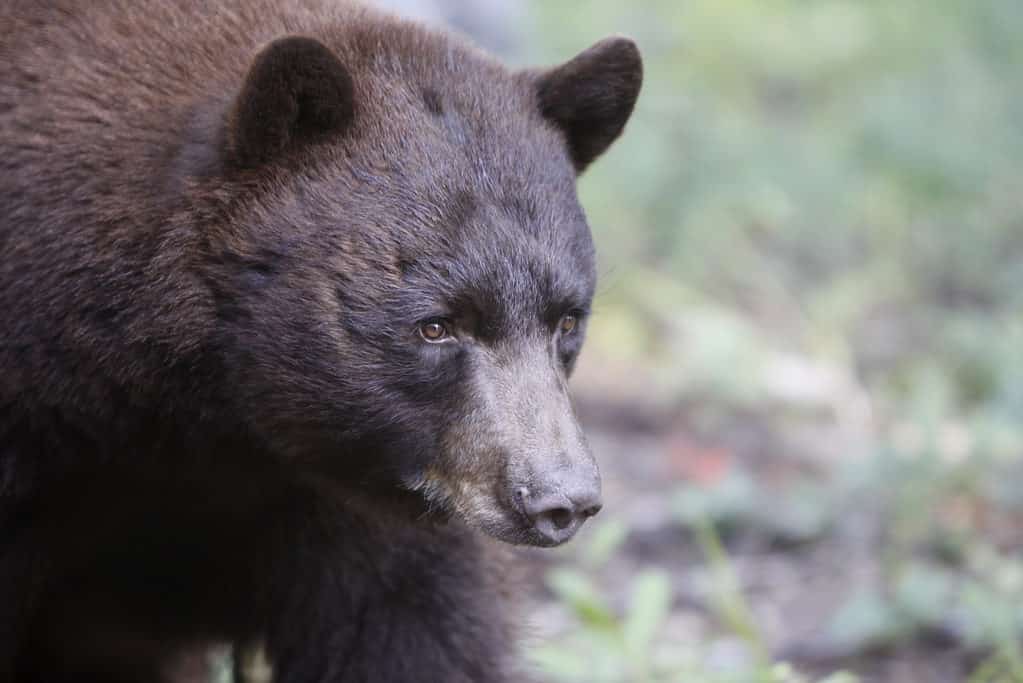
The most widespread bear in North America is the American black bear.
©iStock.com/jjMiller11
The American black bear is North America’s smallest bear species. While their habitat historically included all of the continent, human expansion has forced them northward, making bear sightings on Mount Cheaha increasingly rare.
#3: White-Tailed Deer
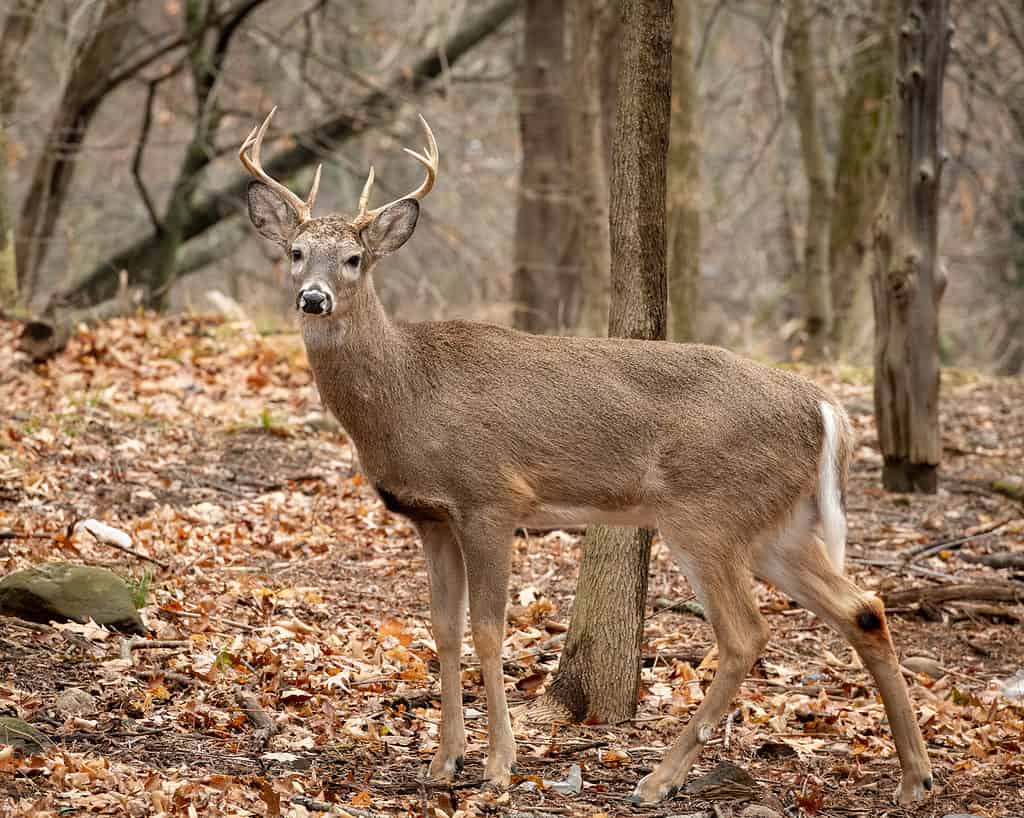
As common as they are throughout the United States, you can expect a fair share of white-tailed deer in the area of Mount Cheaha.
©Herbie Pabst/Shutterstock.com
North America’s most widely distributed ungulate, the white-tailed deer is a common sight throughout all of the United States. Given that they also inhabit the Talladega National Forest surrounding Mount Cheaha, you’ll see plenty if you visit.
#4: Red Fox

Red foxes are one of two fox species that inhabit Mount Cheaha.
©Ondrej Prosicky/Shutterstock.com
The red fox is the largest of all the fox species, and the most easily recognizable. In fact, red foxes have the widest distribution of any wild canine, covering much of North America and sections of Australia. Despite that, they are an invasive species in the latter.
#5: Gray Fox
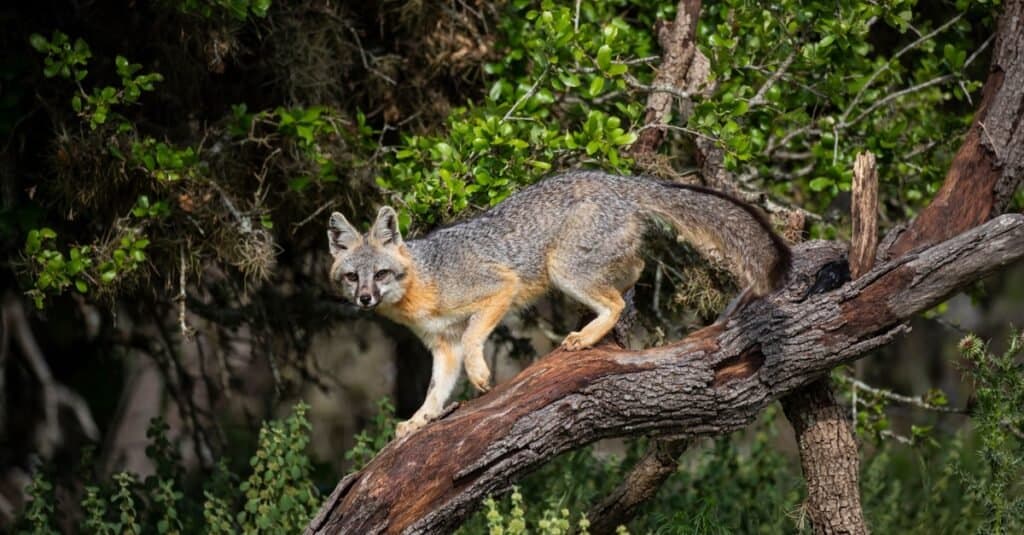
The gray fox was at one point in time the predominant fox species in the Eastern U.S.
©Danita Delimont/Shutterstock.com
The gray fox is more active at night, being a nocturnal species, and shy. They were once the most widespread fox species in the Eastern United States. Human expansion, though, has eliminated their habitat, causing them to adapt to living in and among urban areas.
#6: Fox Squirrel
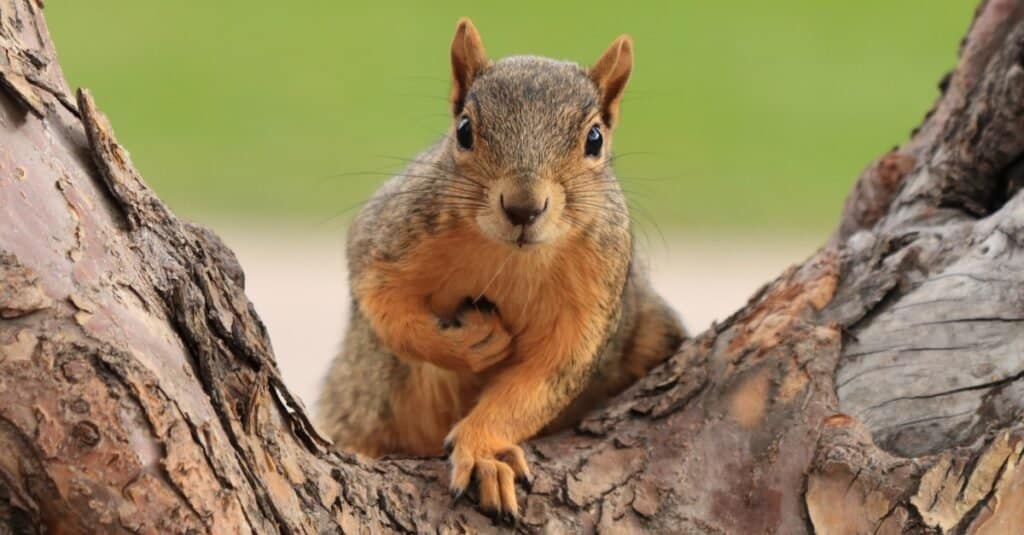
As similar to American red squirrels as fox squirrels may look, they are a unique species.
©Vaclav Matous/Shutterstock.com
The fox squirrel, often a brownish or orange color, is the largest species of squirrel in North America. Many mistake them for American red squirrels in areas that both species inhabit. American red squirrels, though, do not live in Mount Cheaha.
#7: Gray Squirrel
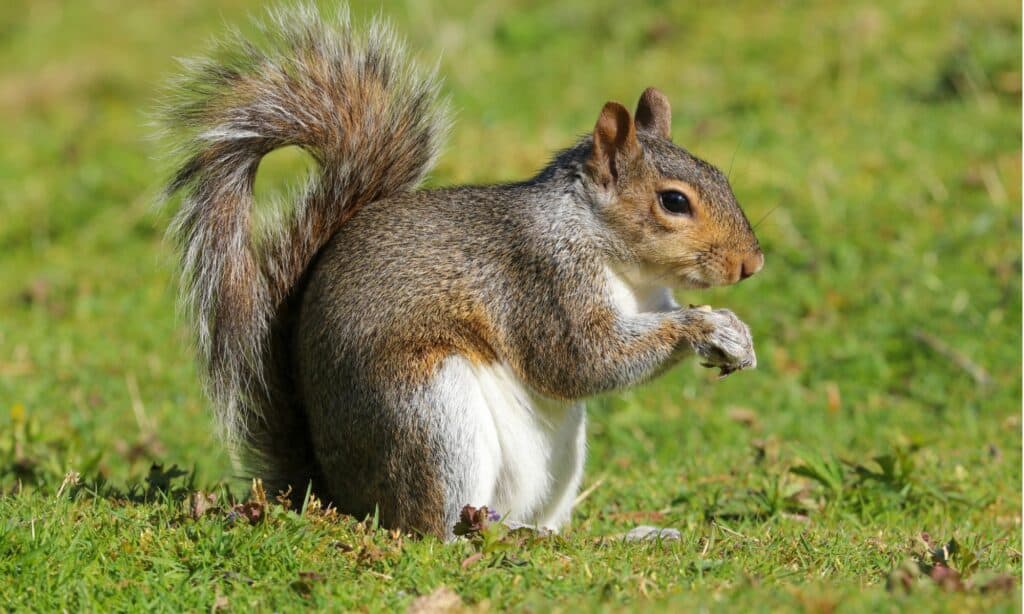
The eastern gray squirrel is a common sight in the United States.
©iStock.com/Helen Davies
The eastern gray squirrel, or simply gray squirrel, is the most popular and recognizable species of squirrel. It’s so ubiquitous and invasive outside its natural habitat that the European Union included it on its list of Invasive Alien Species of Union concern. That means that no one can allow them to enter European environments in any way.
#8: Eastern Cottontail
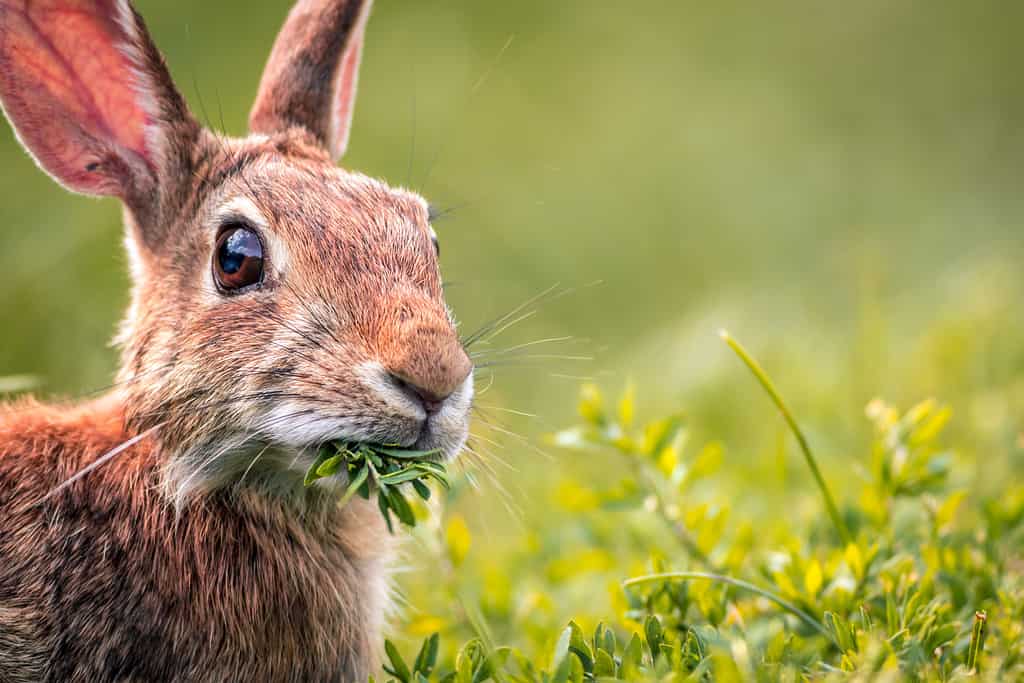
If you visit Cheaha State Park, you’ll almost certainly see an eastern cottontail.
©Rabbitti/Shutterstock.com
This species of rabbit is the most common in and around Alabama, so visitors will have ample opportunity to see them during their visit to Cheaha State Park. Reddish-brown fur and a white belly distinguish the eastern cottontail.
#9: Raccoon
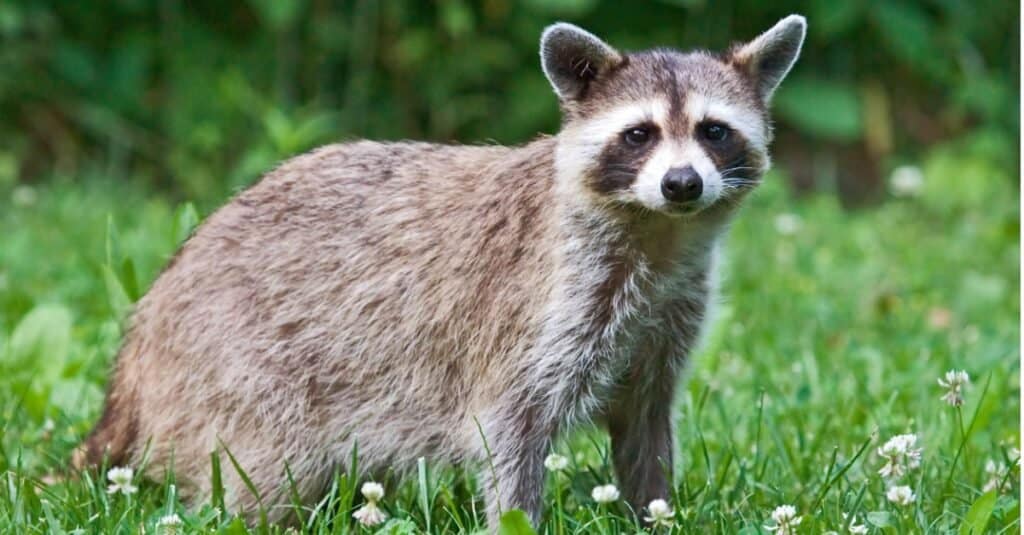
Raccoons are more likely to flee a situation than attack a human.
©iStock.com/JZHunt
Recognized by their ringed tail and black “mask,” the common raccoon poses no danger to your travels to Mount Cheaha. As long as you store your food and waste properly, these clever and intelligent animals will leave you alone.
#10: Gopher Tortoise
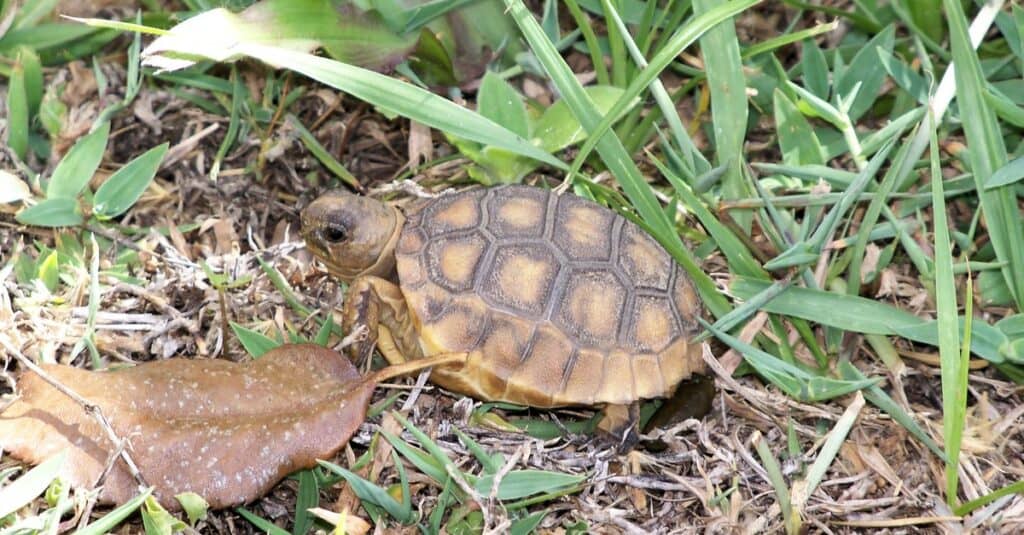
Zoologists and biologists refer to gopher tortoises as a keystone species for all of the homes their burrows provide to other animals.
©Norma Stamp at Sunny Daze/Shutterstock.com
The gopher tortoise is the state reptile of Georgia and a keystone species. That’s because the burrows they dig provide homes for over 360 other animals in the region. The International Union for Conservation of Nature (IUCN) lists them as a vulnerable species, due to the destruction of their natural habitat. Also, many organizations advocate listing them as endangered.
#11: Flattened Musk Turtle
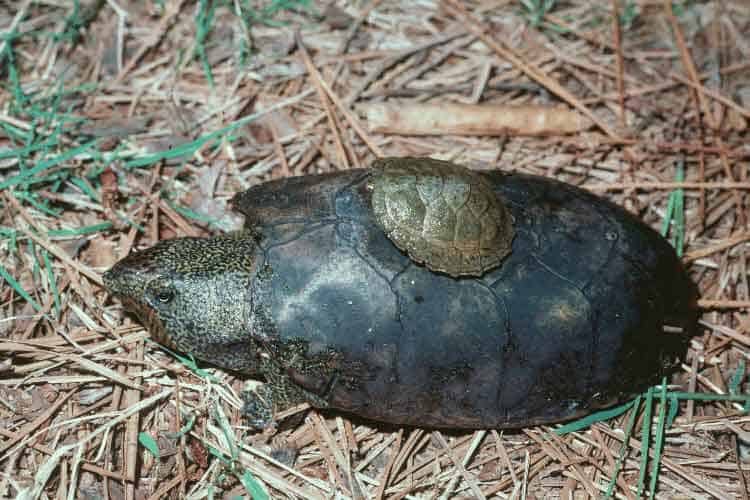
The shell of the flattened musk turtle is instantly recognizable.
©Eugene van der Pijll / From: http://cars.er.usgs.gov/Education/sldshw/herpetology/slides.html (slide 24) {{PD-USGov-USGS}} Category:Testudines / public domain – License
The flattened musk turtle is a critically endangered species. Their name comes from the shape of their shell, which looks as if someone stepped on it. Strip mining and damming have destroyed much of their natural habitat, contributing to their decline.
#12–26: Appalachian Birds
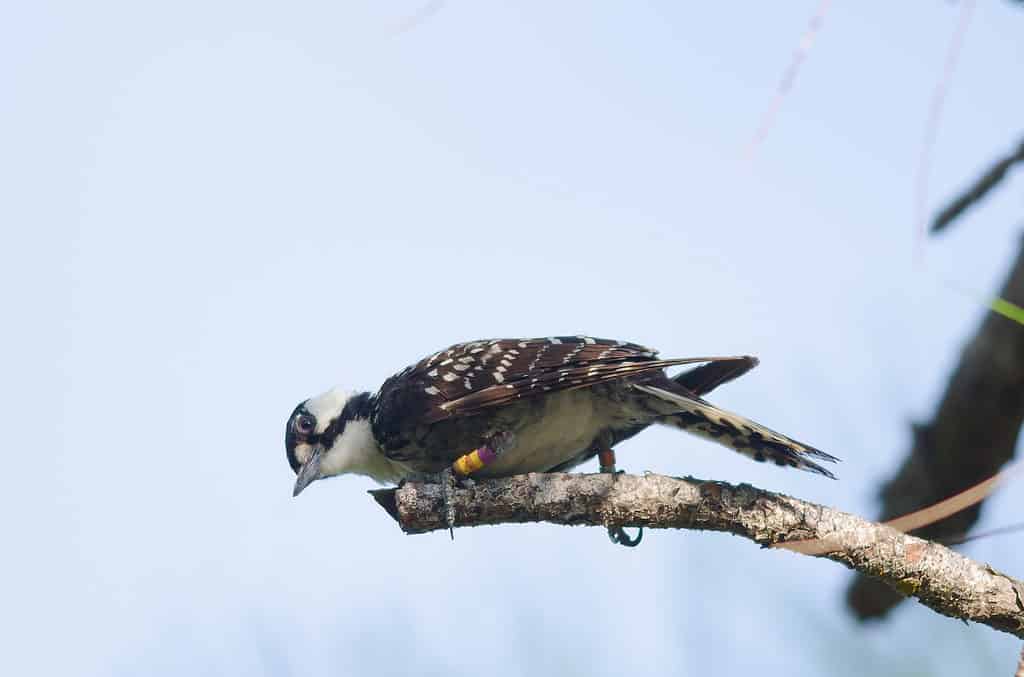
The red-cockaded
woodpecker
is just one of three woodpecker species that inhabit Mount Cheaha.
©iStock.com/spates
Mount Cheaha is in the middle of the migratory path of several North American raptors. Even outside of migration season, though, you will probably be able to spot many of the native birds that call the mountain home. These include the cedar waxwing; wild turkey; three species of woodpecker, including the pileated woodpecker, red-cockaded woodpecker, and scarlet tanager; the blue-headed vireo; bobwhite quail; brown-headed nuthatch; blue grosbeak; ovenbird; wood thrush; and multiple warblers, including the hooded warbler, worm-eating warbler, black-throated green warbler, and prairie warbler.
Of note among these birds is the red-cockaded woodpecker, named so for the red streak on the sides of the male variant. The United States Fish and Wildlife Service lists this woodpecker as endangered. As such, it is a rare sight.
Plants and Trees of Mount Cheaha
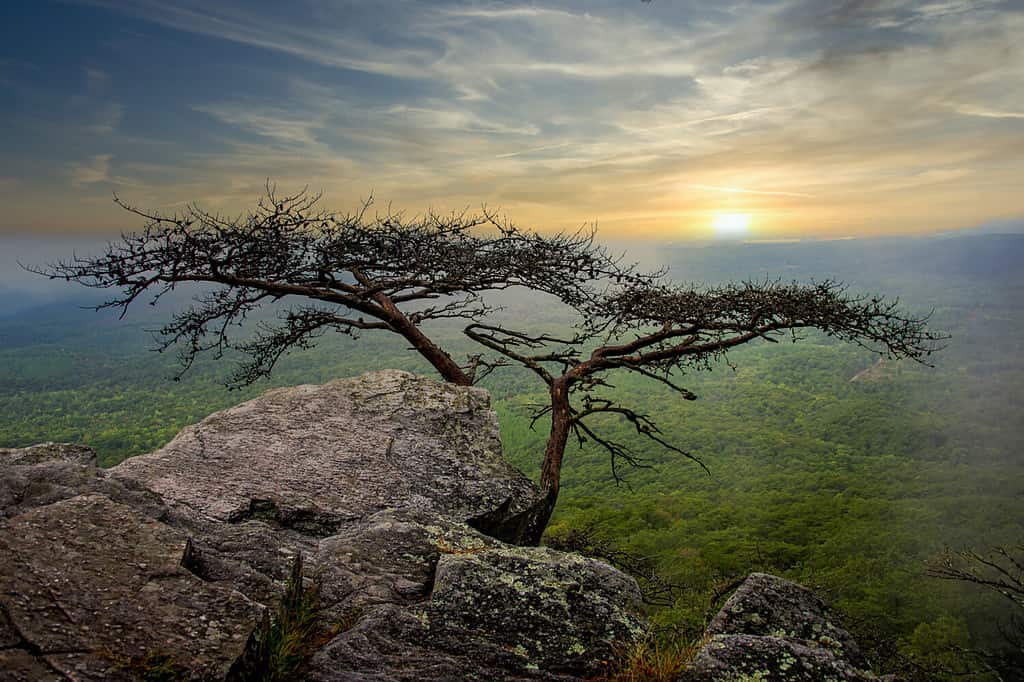
The highest spots in Alabama are located in the Talladega Mountains.
©Sharon Davies Photography/Shutterstock.com
Depending on what time of year you visit Mount Cheaha, you will be treated to a vast array of flowing plants and colorful tree communities. Hundreds of species of flowers, weeds, trees, and shrubberies call this area home. Wildflower fields and bright green leaves will greet you in the spring, while deep oranges and reds and thick moss growth will cover the countryside in the fall.
| Number | Animal |
|---|---|
| 1 | Coyote |
| 2 | Black Bear |
| 3 | White-Tailed Deer |
| 4 | Red Fox |
| 5 | Gray Fox |
| 6 | Fox Squirrel |
| 7 | Gray Squirrel |
| 8 | Eastern Cottontail |
| 9 | Raccoon |
| 10 | Gopher Tortoise |
| 11 | Flattened Musk Turtle |
| 12 | Cedar Waxwing |
| 13 | Wild Turkey |
| 14 | Pileated Woodpecker |
| 15 | Red-cockaded Woodpecker |
| 16 | Scarlet Tanager |
| 17 | Blue-headed Vireo |
| 18 | Bobwhite Quail |
| 19 | Brown-headed Nuthatch |
| 20 | Blue Grosbeak |
| 21 | Ovenbird |
| 22 | Wood Thrush |
| 23 | Hooded Warbler |
| 24 | Worm-eating Warbler |
| 25 | Black-throated Green Warbler |
| 26 | Prairie Warbler |
The photo featured at the top of this post is © iStock.com/JimVallee
Thank you for reading! Have some feedback for us? Contact the AZ Animals editorial team.







